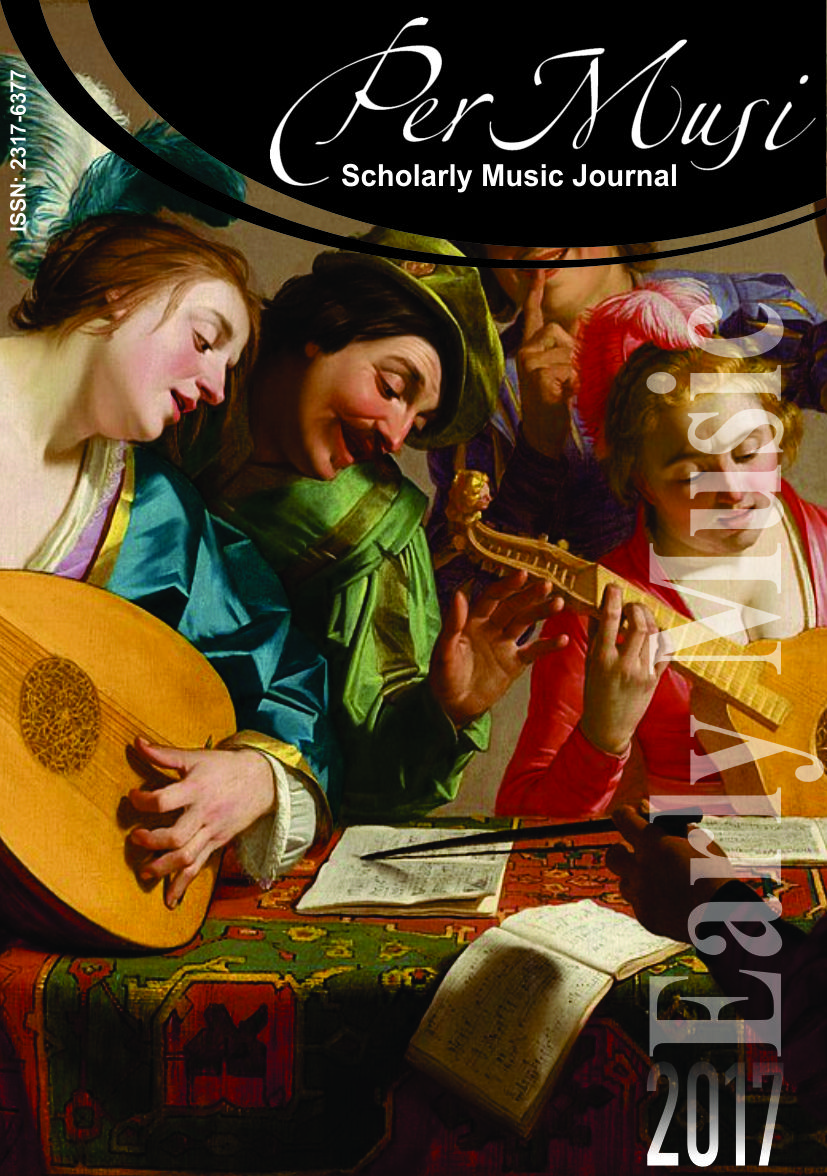Metamorfoses, alegoria e mímeses em l’Orfeo de Claudio Monteverdi e Alessandro Striggio
Palavras-chave:
mímeses e música, música do século XVII e metamorfoses, Ovídio e música, música e alegoriaResumo
Este ensaio traz algumas reflexões sobre a construção do personagem fundador da ópera, Orfeu, da obra homônima de 1607, de Claudio Monteverdi e Alessandro Striggio. Na gênese do novo espetáculo, o personagem foi escolhido graças a seu potencial alegórico, fator que entrava em choque com uma teoria da mímeses baseada na Poética de Aristóteles. Como arguta solução, garantindo o triunfo do melodrama, Monteverdi e Striggio transformam o poeta-cantor em herói, dotando-o de individualidade ímpar, móvel e flexível. A teoria da tragédia ampara a criação do dramma per musica, enquanto o tema das transformações de Ovídio seduz os compositores da nova música e fornecem modelos e ferramentas para a representação dos afetos contrários, capazes de comover a alma do espectador.
Downloads
Publicado
Edição
Seção
Licença

Exceto onde está indicado, o conteúdo neste site está sob uma Licença Creative Commons - Atribuição 4.0 Internacional.












